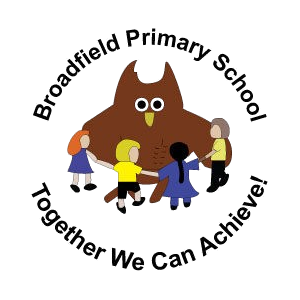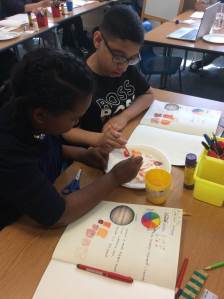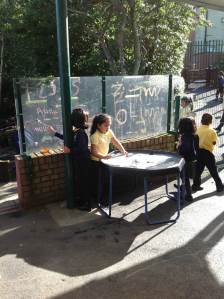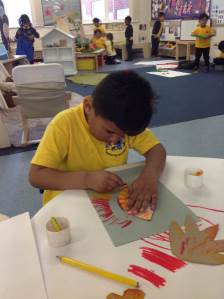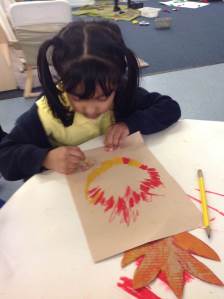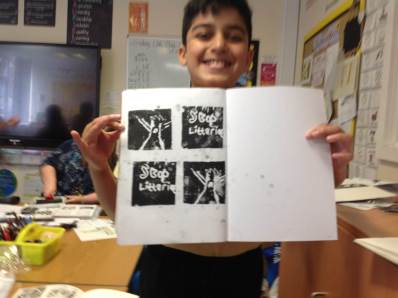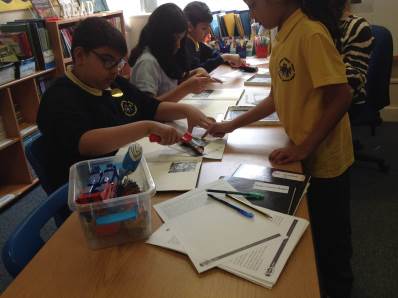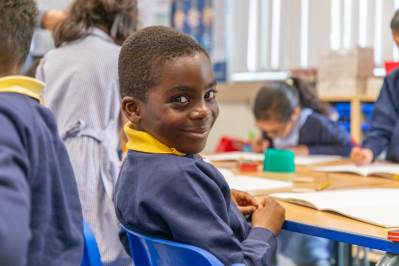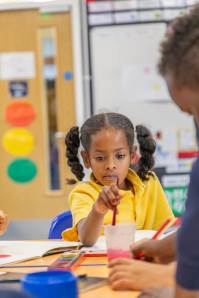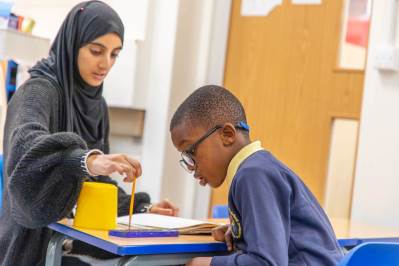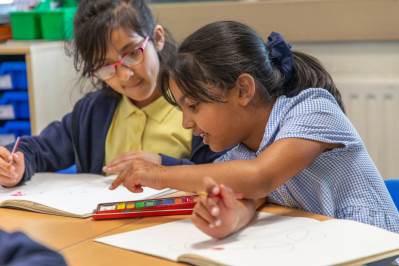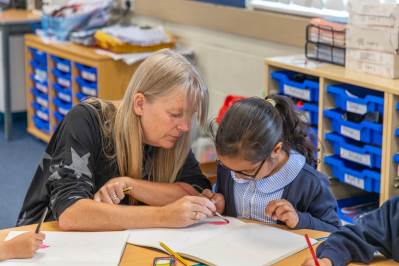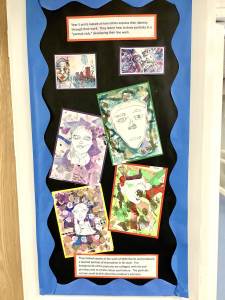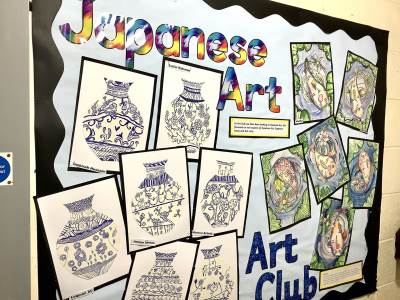Art
Art
Year 1/2 Detailed Synopsis
Year 3/4 Detailed Synopsis
Year 5/6 Detailed Synopsis
Intent - Our Aims
Our intent is to provide opportunities for children to develop as confident, articulate and well-rounded children who can succeed as individuals and contribute to their community and the wider world.
At Broadfield, we believe that the art curriculum should be accessible to all enabling every child’s ability to reach their full potential. As well as fulfilling the requirements of the National Curriculum for Art and Design we aim to provide children with a broad, balanced and progressive curriculum which develops not only their skills and knowledge but also their enjoyment of art.
The National Curriculum for Art and Design aims to ensure that all children:
1. Produce creative work, explore their ideas and record their experiences
2. Become proficient in drawing, painting, sculpture and other art, craft and design techniques
3. Evaluate and analyse creative works using the language of art, craft and design
4. Know about great artists, craft makers and designers, and understand the historical and cultural development of their art form.
In addition to the National Curriculum Broadfield aims to ensure that all children:
- Investigate, analyse, experiment and work expressively to explore and record their observations, imagination, feelings and personal responses when engaged in creative processes and when making outcomes.
- Act with purpose to develop skills, selecting and controlling suitable tools and systems with increasing proficiency to achieve intended outcomes.
- Have opportunities to work in a range of scales, in two and three dimensions.
- Have opportunities to work in a variety of processes and media which include:
- Drawing for different purposes and using a range of media
- Painting for different purposes and in different ways, exploring diverse techniques and processes, using a range of media and a variety of tools
- Sculpture for different purposes and using different materials
- Textiles to explore the properties of textile materials and design garments
- Collage using a range of papers and adding to them using a range of media.
- Develop vocabulary relevant to art, craft and design.
Implementation - How We Will Do This
At Broadfield we will achieve this by:
- Teaching art regularly as an enquiry ‘enhancer’ within the Broadfield curriculum. The children will cover an art topic for half a term at least three times across the academic year
- Providing opportunities to rehearse drawing skills when art is not the half term focus
- Having additional opportunities to engage with art activities throughout the school year such as art clubs and competitions
- Celebrating children’s effort, progress and achievement in art by sharing their work through displays, school newsletter/website and assemblies
- Linking art closely to the class topic to ensure relevance and context
- Using sketchbooks from Key Stage One to ensure children are exposed to the relevant skills and knowledge
- Using selected pathways from the Access Art Primary Curriculum to support the teaching of a skills-based curriculum, which covers drawing, painting, sculpture, printing and textiles
- Adapting the curriculum to meet the needs of all children
- Providing opportunities to explore the work of artists, crafts people, architects, and designers that include examples selected from both male and female practitioners, examples from diverse genres, periods and cultures, exploring a range of different intentions and including examples selected from physical and virtual forms of expression
- Enabling children to develop and apply their reading and writing skills alongside their speaking and listening skills as they research, communicate, analyse, critically evaluate and review the work of significant artists, craftspeople, architects, and designers
- Assessing progress in art, craft and design through a variety of means, considering both the quality of the products that children make and the skills they exhibit as they use tools, materials and processes. Carefully chosen prerequisite and ‘in unit’ learning tasks enable children to develop and retain knowledge and skills across a range of topics, build on key concepts and make links year by year.
Early Years Foundation Stage (EYFS)
In the Early Years Foundation Stage, children are encouraged to engage with the arts, enabling them to explore and play with a wide range of media and materials through a combination of child initiated and adult directed opportunities. The opportunities are planned using the Physical Development and Expressive Arts and Design sections of the Development Matters and Early Learning Goals documents with inspiration also taken from the Access Arts EYFS pathways.
Children in Acorns have opportunities to:
- Begin developing a love and enjoyment of art processes
- Explore paint, using fingers and other parts of their bodies as well as brushes and other tools
- Express ideas and feelings through making marks, and sometimes give a meaning to the marks they make
- Explore different materials, using all of their senses
- Manipulate and play with different materials, developing control
- Use their imagination as they consider what they can do with different materials
- Make simple models which express their ideas.
Children in Nursery have opportunities to:
- Develop a love and enjoyment of art processes
- Explore different materials freely, to develop their ideas about how to use them and what to
- Join different materials and explore different
- Create closed shapes with continuous lines and begin to use these shapes to represent objects
- Draw with increasing complexity and detail, such as representing a face with a circle and including details
- Use drawing to represent ideas like movement, emotions or loud noises
- Explore colour and colour mixing
- Use one-handed tools and equipment, for example, making snips in paper with scissors
- Use a comfortable grip with good control when holding pens and pen
- Develop a preference for a dominant hand.
Children in Reception have opportunities to:
- Develop a love and enjoyment of art and its processes
- Explore, use and refine a variety of artistic effects to express their ideas and feeling
- Return to and build on their previous learning, refining ideas and developing their ability to represent them
- Create collaboratively, sharing ideas and resources
- Develop their small motor skills so that they can use a range of tools competently, safely and confidently including pencils for drawing and writing, paint brushes and scissors
- Safely use and explore a variety of materials, tools and techniques, experimenting with colour, design, texture, form and function
- Begin to show accuracy and care when drawing.
Key Stage 1
Key Stage One children have opportunities to:
- Continue to develop their love and enjoyment of art and its processes
- Use a range of materials creatively as they investigate, experiment and explore materials and processes informing the way that they design and make products and expressive outcomes
- Use drawing, painting, sculpture and a range of processes which include digital media and three-dimensional work to develop and share their ideas, experiences and imagination
- Learn how to investigate, explore, design, create and make as they use and develop their skills knowledge and understanding gained through the key processes of :
- Drawing
- Colour
- Assembling/constructing and making, forming and modelling
- Printing and pattern
- Designing
- Selecting, collecting, assembling, cutting, tearing, sticking and collaging.
- Capturing and manipulating images.
- Developing and using creative, critical and technical language
- Discover and start to develop a wide range of art, craft and design processes and techniques in using colour, pattern, texture, line, shape, tone, form and space
- Learn about the work of a range of artists, craft makers and designers, describing the differences and similarities between different practices and disciplines and making links to their own work
- Share their developing views and ideas, through reading, speaking and listening, using this to inform their own creative actions
- Work both individually and collaboratively with others
Key Stage 2
In Key Stage Two children have opportunities to:
- Further develop their love and enjoyment of art processes
- Create sketch books and methods of recording to generate, develop, research and record their observations and use them to review and revisit ideas
- Develop design skills through research, investigation, exploration and experimentation, learning how to document and record their thinking and ideas; suggesting alternatives, speculating, hypothesising to develop imagination and ideas for alternatives and improvements in their own work
- Develop, evaluate and improve their mastery of a variety of art, craft and design techniques, to include drawing, painting and sculpture with a range of materials such as pencils, charcoal, paint, clay and digital technologies, and make work in two and three dimensions with a range of different media
- Further develop and extend their skills, knowledge and understanding gained through the key processes of:
- Drawing
- Physical mixing of colours
- Painting
- Assembling/constructing and making, forming and modelling
- Printing and pattern
- Researching, selecting, collecting, assembling, cutting, tearing, sticking, layering and collaging
- Capturing and manipulating images
- Developing and using creative, critical and technical language
- Learn about great and significant artists, craftspeople, architects, and designers in history and also within contemporary and future contexts
- Share and document their developing views and ideas, to understand why artists and designers work in the ways that they do, make decisions and use this to inform their own creative actions, through reading, writing, speaking and listening.
- Work both individually and collaboratively with others.
Impact
Children:
- Understand how to develop ideas using a sketchbook
- Produce creative work, exploring and recording their ideas and experiences.
- Become increasingly more proficient in drawing, painting, sculpture and other art, craft and design techniques
- Evaluate and analyse creative works using subject specific language
- Know about great artists and the historical and cultural development of their art
- Meet the end of phase expectations
- Leave Broadfield Primary School equipped with the techniques and confidence needed to give them a strong foundation for the next stage of their education.
